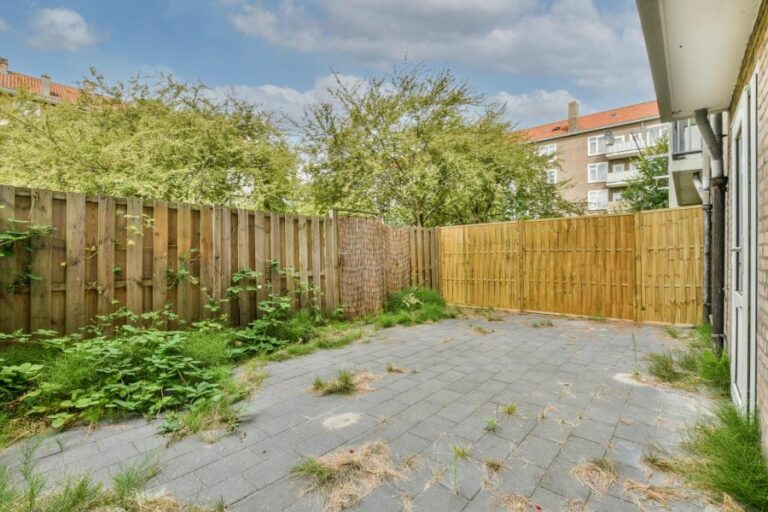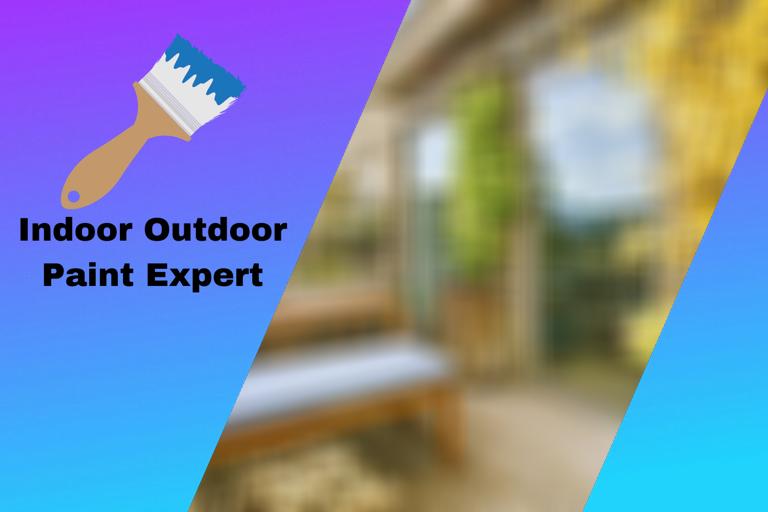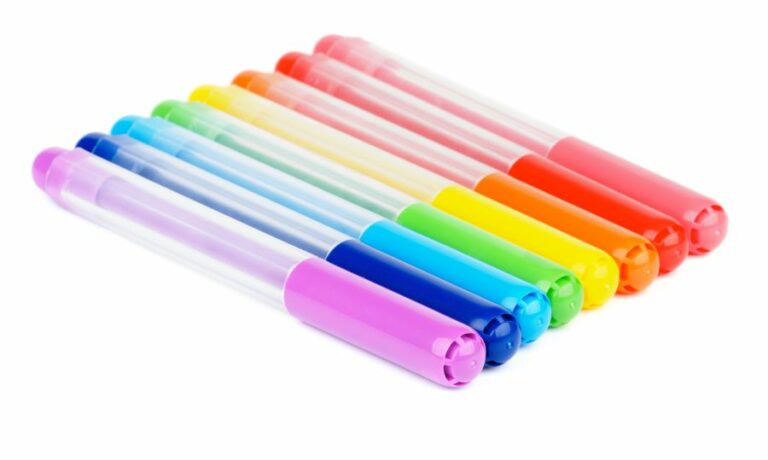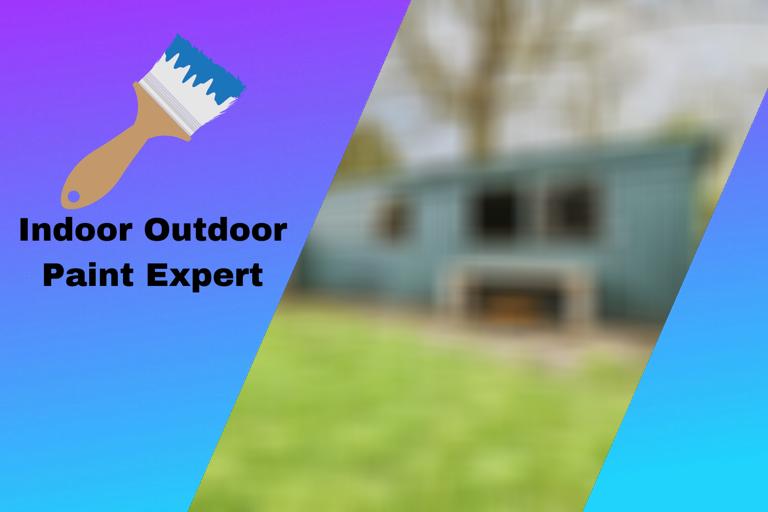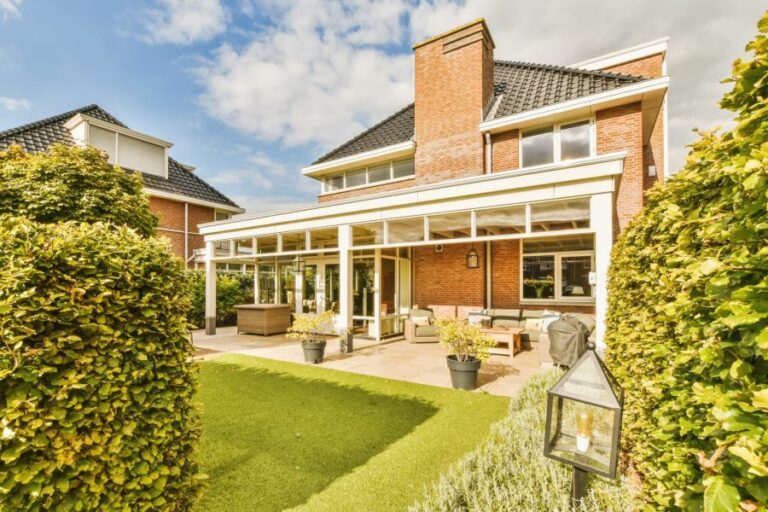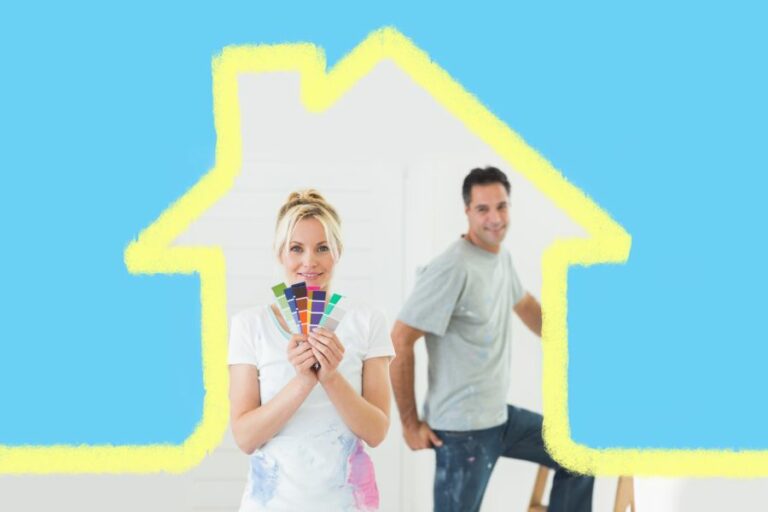Yellow Outdoor Paint, 25 Things You Should Know
Are you looking to create a vibrant and cheerful atmosphere in your outdoor living space? You’re in luck, as yellow outdoor paint is the perfect solution for your needs. With extensive knowledge in paint selection and application methods, I am here to guide you to the best yellow outdoor paint options that will not only elevate your space but also retain their color and quality through different weather conditions.
Yellow outdoor paint:>
Yellow outdoor paint is a vibrant color associated with optimism and energy, perfect for enhancing exterior spaces. When selecting yellow paint, consider using latex-based paint for its durability and affordability. Popular shades include sunflower, canary, golden, and mustard yellow. Proper surface preparation, using quality brushes or rollers, and applying multiple coats in suitable weather conditions ensure a long-lasting, vibrant finish. Regular maintenance includes cleaning, inspecting, and repairing any damage or moisture exposure.
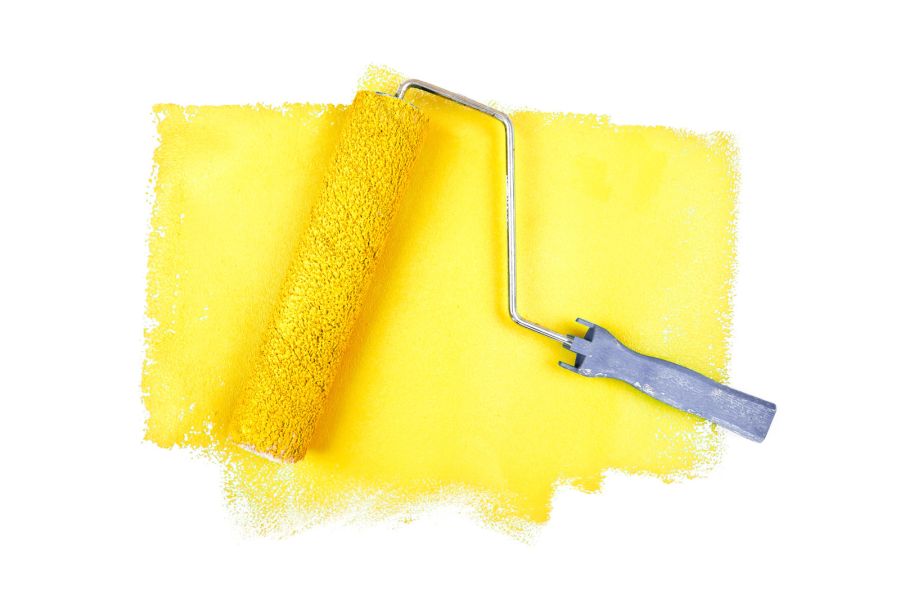
Brighten up your outdoor space with yellow outdoor paint! Discover the top brands, their benefits, and expert tips for using this vibrant hue. Keep reading to unleash the true potential of this sunny shade in your exterior projects!
Contents
- 1 Yellow Exterior Paint
- 2 What is the rationale behind not recommending yellow paint for exterior surfaces?
- 3 Is Yellow an Appropriate Choice for Exterior Color?
- 4 What is the Most Widely-Preferred Yellow Paint Variant?
- 5 Identifying the Optimal Paint Choice for Exterior Applications
- 6 What are the reasons behind certain colors being discouraged for exterior use?
Yellow Exterior Paint
• Introduction
Yellow is a vibrant and uplifting color often associated with optimism, energy, and warmth. It is no surprise that incorporating yellow outdoor paint can significantly enhance the ambiance and appeal of any exterior space.
Whether you are seeking to refresh your home’s exterior or create a welcoming atmosphere for your business, this comprehensive guide will cover everything you need to know about selecting, applying, and maintaining yellow outdoor paint.
• Section 1: Selecting the Right Yellow Outdoor Paint
– Type of Paint
There are various types of outdoor paint, and choosing the right one is crucial for the longevity and appearance of your project. The three main types of outdoor paint are as follows:
- Latex-based paint: Water-based and easy to clean, latex paint is a popular choice for outdoor surfaces due to its durability and resistance to peeling, fading, and chalking.
- Oil-based paint: Although it takes longer to dry and is harder to clean, oil-based paint offers fantastic adhesion and a smooth, glossy finish. It performs well on metal surfaces but is not recommended for surfaces that may have previous coats of latex paint.
- Elastomeric paint: Extremely flexible, elastomeric paint can bridge hairline cracks and offer excellent waterproofing capabilities. It has a thicker consistency, making it more challenging to apply but offering exceptional durability.
After considering these factors, I recommend using good quality latex-based paint for most outdoor applications, as it offers the best combination of durability, ease of use, and affordability.
– Shades of Yellow
Once you have determined which types of paint best suit your project, the next step is to select the perfect shade of yellow. Some popular shades of yellow paint include:
- Sunflower Yellow: A bright, warm shade that works well on cottages, garden walls, and fences.
- Canary Yellow: A softer yellow, ideal for creating a welcoming atmosphere and beautiful contrast with dark accents.
- Golden Yellow: Rich and warm undertones, perfect for adding a touch of elegance to your outdoor space.
- Mustard Yellow: A darker shade with a hint of earthy tones, suitable for a more subdued, sophisticated look.
It is essential to consider the existing color palette of your surroundings and neighboring properties when selecting a shade of yellow. To make an informed decision, purchase paint samples and apply them to different areas of your outdoor space to see how they look in various lighting conditions.
• Section 2: Preparing and Applying Yellow Outdoor Paint
– Surface Preparation
Proper surface preparation is critical when painting outdoors, as it ensures the paint adheres correctly and lasts longer.
- Cleaning: Remove any dirt, dust, algae, or mold from the surface using a pressure washer or a scrub brush and soapy water.
- Repairing: Inspect the surface for cracks, holes, or peeling paint, and repair as necessary. It may require patching, sanding, or using a paintable caulk to fill gaps.
- Priming: Apply a coat of high-quality primer to your surface, especially for porous or chalky surfaces. This step will help the yellow paint adhere better and increase its durability.
– Application Techniques
Now that your surface is clean and primed, you can start applying the yellow outdoor paint. For best results, follow these application tips:
- Use a quality brush or roller: Good-quality brushes and rollers hold paint better and provide a smoother, more even finish.
- Paint in proper weather conditions: Choose a day when there is low wind and the temperature is between 50 and 90 degrees Fahrenheit. Painting in extreme temperatures or direct sunlight may cause the paint to dry too quickly, leading to poor adhesion, bubbling, or peeling.
- Apply multiple coats: Yellow outdoor paint may require multiple coats to achieve full coverage and a rich, vibrant finish. Allow each coat to dry completely before applying the next one.
• Section 3: Maintaining Your Yellow Outdoor Paint
To keep your yellow paint looking fresh and vibrant, follow these maintenance tips:
- Regular cleaning: Gently clean the painted surfaces with a soft brush and mild soapy water at least once a year to remove dirt and grime.
- Inspect and repair: Periodically, inspect your painted surfaces for cracks, peeling, or fading. Address these issues promptly by repairing the damage, cleaning the area, and applying a fresh coat of paint.
- Protect from moisture: If possible, ensure proper drainage to prevent water pooling and try to keep plants and foliage away from the painted surfaces to avoid excess moisture exposure.
By following these expert tips and recommendations, you can successfully incorporate yellow outdoor paint into your space, enhancing your exterior’s appeal and creating a cheerful, vibrant atmosphere.
For additional guidance on choosing and applying outdoor paint colors, visit the U.S. Department of Energy’s Guide to Exterior Paints and Coatings.
What is the rationale behind not recommending yellow paint for exterior surfaces?
• Understanding Colors and Sunlight
Before delving into the specific concerns regarding yellow paint for exterior use, it is important to understand the effect of sunlight on colors. Ultraviolet (UV) rays emitted by the sun can cause paint to fade over time.
This is especially true for colors that absorb more of these harmful rays. For instance, darker colors, like browns and blues, are more likely to absorb heat and deteriorate quickly. In contrast, lighter colors, like whites and beiges, reflect the sun’s rays and are less likely to fade.
Although yellow is considered a lighter color, it still exhibits unique characteristics that make it unsuitable for exterior use.
• Fading and Discoloration Concerns
One of the main reasons why yellow paint is not recommended for exterior use is due to its susceptibility to fading and discoloration. Yellow pigments, specifically organic pigments, are prone to losing their vibrancy and brightness when exposed directly to sunlight over long periods.
This issue may also be exacerbated by the type of paint used. For example, oil-based paints are more likely to fade than water-based paints, and this holds true for yellow shades.
The National Park Service provides valuable information on paint selection and maintenance, ensuring that the chosen color will retain its aesthetic appeal and durability in the face of various environmental factors.
As yellow paint fades, it often turns a less attractive shade of beige or off-white, giving the exterior an aged and weathered appearance. This can be unappealing to homeowners and can lower the overall curb appeal of a property.
Therefore, it is crucial to choose a paint color that remains steadfast against the elements, providing a lasting vibrancy and freshness to the residence.
• Compatibility with Other Exterior Features
When selecting an exterior paint color, it is important to consider its compatibility with other aspects of the property, such as the roof, trims, and other architectural features. Yellow, as a color, does not always complement these features well, limiting its use as an exterior paint choice.
For instance, yellow paint may clash with certain roof materials like terracotta tiles, wooden shingles, or colored metal roofing. Additionally, yellow paint may not provide the desired contrast when paired with white or beige trims, reducing the visual appeal of a property.
• Impact on Resale Value
Another reason why yellow paint is not recommended for exterior use is its potential impact on the property’s resale value. A home’s exterior color can significantly influence a potential buyer’s perception of its value and appeal.
In general, neutral colors like gray, white, or beige are considered more universally appealing and are more likely to attract a wider range of potential buyers. On the other hand, yellow is a more distinctive and polarizing color, which can reduce the number of potential buyers interested in the home.
As a result, homeowners looking to sell in the future are often advised against using yellow paint for their exterior.
• Alternative Options and Recommendations
For homeowners who still desire a vibrant and cheerful exterior color, there are alternative options to consider. Instead of yellow, opting for warmer shades of beige, tan, or cream can provide a similar effect while also ensuring longevity and compatibility with other exterior features.
Citrus hues, like orange or lime green, offer a more contemporary and bold look while still retaining some aspects of the bright and uplifting qualities of yellow. However, it’s essential to use these colors judiciously and in moderation, as they can also be polarizing to potential buyers if overused.
In conclusion, yellow paint is not typically recommended for exterior use due to concerns about its durability, compatibility with other property features, and potential impact on resale value. However, there are still plenty of alternative options for those seeking a bright and joyful exterior look.
As always, it’s essential to consult with a professional painter or designer to ensure the chosen color is well-suited for the specific property and desired aesthetic.
Is Yellow an Appropriate Choice for Exterior Color?
• The Psychology of Yellow
Yellow, as a color, is known to evoke feelings of happiness, warmth, and energy. According to color psychology, yellow can stimulate mental activity and inspire creative thoughts. This makes it a popular choice for settings that require high levels of concentration or creativity.
For example, it has been shown that using yellow in classroom environments can improve learning outcomes for students (source: American Psychological Association).
Given these positive associations, it is no surprise that homeowners are often drawn to yellow when considering exterior paint colors. By choosing a yellow exterior, homeowners aim to create a warm and inviting atmosphere – a beacon of light and cheerfulness amidst the surrounding environment.
• Factors to Consider When Choosing a Yellow Exterior
When considering whether yellow is the right exterior color for your home, there are several factors you should weigh:
– Architectural Style
The architectural style of your home plays an important role in selecting the ideal exterior color. Traditional styles, like Colonial or Victorian houses, often benefit from a more classic color scheme that includes yellows with soft or muted undertones, such as creamy butter or earthy mustard.
In contrast, modern and contemporary style homes might better suit bolder, more vibrant shades of yellow. This can act as a striking visual statement when combined with sleek and minimalistic design elements.
– Surrounding Landscape
The natural environment surrounding your home can greatly influence the shade of yellow that will look best on your exterior. Homes situated in green, lush landscapes often benefit from warmer, rich shades of yellow that contrast nicely with the surrounding greenery.
Alternatively, homes in arid, desert-like environments can be complemented by softer, more subtle yellow tones.
– Neighborhood Aesthetic
It is important to consider the overall aesthetic of your neighborhood when selecting an exterior paint color. Although you may love a bright, sunshine yellow, it might not fit in well with the muted, earthy tones favored by your neighbors.
Navigating this balance between personal preference and maintaining a harmonious relationship with your community is critical.
– Climate
The climate of your region can also impact the appropriateness of a yellow exterior. In areas with an abundance of sunlight, bright and warm shades of yellow can be energizing and uplifting.
However, when used in regions with predominantly overcast or cloudy weather, yellow can risk looking washed out or dull.
• Tips for Achieving the Perfect Yellow Exterior
- Test paint samples: Paint swatches on a small section of your home’s exterior, and observe how the color looks in different lighting conditions throughout the day. By doing so, you can ensure that the shade of yellow you select will look attractive and consistent in your home regardless of the changing light.
- Consider the impact of surrounding elements: When selecting a yellow exterior for your home, consider how the color will interact with other elements, like the roof, trim, and landscaping. Be sure to take samples with you when purchasing related materials to ensure a cohesive final look.
- Consult with a professional: Reaching out to a professional paint consultant or color expert can provide valuable insights and recommendations when it comes to selecting the perfect shade of yellow. They can assess your property, taking into consideration the various factors mentioned above, and recommend a yellow that will enhance and complement your specific home.
• In Conclusion: Embrace the Energy of Yellow
So, is yellow a good exterior color for your home? Ultimately, the right shade of yellow can be a fantastic addition to your home’s facade, as it can project warmth, energy, and visual interest.
When taking into account factors such as your home’s architectural style, surrounding landscape, and neighborhood aesthetic, as well as considering climate and personal preference, yellow has the potential to create a welcoming and visually appealing exterior for your home.
By following the tips and recommendations provided in this article, you can achieve a vibrant, inviting, and cohesive exterior that showcases the power of yellow as an exterior color choice.
What is the Most Widely-Preferred Yellow Paint Variant?
Yellow paint, often associated with warmth, light, and energy, has remained a popular color option for many interior and exterior projects. With a vast spectrum of shades and tones available, selecting the most popular yellow paint can be subjective and challenging.
• Understanding Types of Yellow Paint
To determine the most popular yellow paint, it’s essential to understand the diverse range of yellows found in various paint lines. Some popular types of yellow paint include:
– Pastel Yellows
Pastel yellows are soft, muted tones that lend a gentle and buttery appearance to spaces. These shades of yellow are perfect for creating a soothing yet warm atmosphere in living rooms, bedrooms, and nurseries. Some popular pastel yellows include:
- Benjamin Moore’s Hawthorne Yellow
- Farrow and Ball’s Dayroom Yellow
- Sherwin Williams’ Friendly Yellow
– Vibrant Yellows
Vibrant yellows are bold, striking colors that make a statement in any space. These eye-catching hues are perfect for accent walls, exterior doors, and other decorative elements. Some popular vibrant yellows include:
- Behr’s Saffron Strands
- PPG’s Yarrow
- Valspar’s Blazing Bonfire
– Golden Yellows
Golden yellows are warm, rich hues that evoke a sense of luxury and elegance. These classic shades of yellow are ideal for creating an inviting ambiance in dining rooms, libraries, and other sophisticated settings. Some popular golden yellows include:
- Glidden’s Golden Castle
- Dulux’s Rich Gold
- Pratt & Lambert’s Royal Gold
– Mustard Yellows
Mustard yellows are earthy, deep tones that bring a sense of coziness and depth to any space. These trendy shades are popular in contemporary and modern design and can be used to make a striking statement on accent walls or furniture. Some popular mustard yellows include:
- Farrow and Ball’s India Yellow
- Benjamin Moore’s Golden Bounty
- Sherwin Williams’ Nugget
• Factors to Consider When Selecting Yellow Paint
While the most popular yellow paint is subjective, several factors should be taken into account to help you make the right choice for your project. These factors include:
- The size and natural light in the space: Lighter shades of yellow work best in smaller or darker rooms, while bolder shades make a statement in larger, well-lit areas.
- The desired mood and atmosphere: Pastel or golden yellows create a warm and inviting ambiance, while vibrant or mustard yellows make a bold statement.
- The color scheme and other elements in the room: Consider the existing color palette and decor in the space when selecting a yellow shade to ensure it complements and enhances the overall design.
• Recommended Color Pairings with Yellow Paint
Yellow paint is versatile and works well with various colors to create stunning and harmonious interiors. Some recommended color pairings for yellow paint include:
– Neutrals
Pairing yellow with neutrals like gray, beige, or white creates a balanced and sophisticated look. For example, Benjamin Moore’s Hawthorne Yellow paired with a crisp white like Sherwin Williams’ Pure White or a soft gray like Behr’s Silver Drop creates an inviting atmosphere.
– Blues
Blues and yellows are a classic color combination that provides a fresh and cheery look. A pastel yellow like Sherwin Williams’ Friendly Yellow pairs well with a soft blue like Benjamin Moore’s Palladian Blue or a rich navy like Farrow and Ball’s Hague Blue.
– Greens
Yellow and green create a harmonious, nature-inspired color scheme. A golden yellow like Dulux’s Rich Gold can be beautifully complemented by an earthy green like Benjamin Moore’s Saybrook Sage or a vibrant green like PPG’s Artichoke.
For more insights on color pairings and design, professional color resources such as Pantone and Color Matters provide valuable information and inspiration.
• Final Thoughts
Determining the most popular yellow paint is subjective, as individual preferences and needs may vary. However, understanding the various types of yellow paint, considering essential factors in selecting a shade, and exploring recommended color pairings can help guide you in making an informed decision.
In conclusion, the most popular yellow paint will ultimately depend on the desired atmosphere, existing design elements, and personal style.
Identifying the Optimal Paint Choice for Exterior Applications
Choosing the right exterior paint for your home or building can seem daunting. However, if you take the time to research and understand your options, you can make a well-informed decision that will not only enhance the appearance but also protect your property for years to come.
• Types of Exterior Paint
The three main types of paint used for exterior applications are acrylic, latex, and oil-based. Each has its own advantages and disadvantages, so let’s take a closer look at each type.
– Acrylic Paint
Acrylic paint is a water-based paint that has high durability and strong resistance to the elements. It is made from a combination of water, pigment, and acrylic resin, making it an excellent choice for exterior surfaces.
The US National Library of Medicine – National Institutes of Health reports that acrylic paint is less prone to crack or peel than oil-based paints due to its flexibility.
Advantages:
- Quick-drying
- Highly durable – Fade-resistant – Easy to clean up with soap and water
Disadvantages:
- Slightly more expensive than other types of paint
– Latex Paint
Like acrylic paint, latex paint is also water-based and is composed of a water-soluble binder, pigments, and additives. One key difference is that latex paint has a greater proportion of water in its formulation, which allows it to dry faster than acrylic paint.
Advantages:
- Dries quickly
- Easy to apply and clean up
- Good durability
- Breathable, allowing moisture to escape from the surface
Disadvantages:
- Can take longer to cure fully
- Somewhat less durable than acrylic paint
– Oil-Based Paint
Oil-based paint, also known as alkyd paint, contains a drying oil as the main binder. This type of paint is known for its slow-drying properties, which provide a longer working time during application.
Advantages:
- Excellent durability
- Smooth, glossy finish
- Longer working time during application
Disadvantages:
- Slow drying time
- More difficult to clean up (requiring mineral spirits or paint thinner)
- Audible odors and higher VOC content
• Paint Finish Options
Selecting the appropriate finish for your exterior paint project is crucial, as it can affect both the appearance and performance of your paint. Common finish options include flat, satin, semi-gloss, and gloss.
– Flat Finish
A flat finish offers a non-reflective, matte appearance. It is often preferred for covering imperfections, as it helps to hide surface blemishes and irregularities.
Advantages:
- Hides surface imperfections
- Helps to mask minor imperfections in application
Disadvantages:
- Less durable than other finishes
- More susceptible to dirt and stains
– Satin Finish
Satin finishes offer a slightly glossy appearance and are a popular choice for exterior surfaces, as they provide a balance between durability and appearance.
Advantages:
- Balanced durability and appearance
- Resistant to mildew and staining
Disadvantages:
- May show application imperfections more than a flat finish
– Semi-Gloss Finish
A semi-gloss finish provides a moderately shiny appearance and is frequently used for trim, doors, and shutters. This finish offers increased durability and resistance to the elements, making it ideal for high-traffic areas or surfaces prone to wear.
Advantages:
- Durable and resistant to wear
- Easy to clean
Disadvantages:
- May highlight surface imperfections
– Gloss Finish
A gloss finish delivers a highly reflective, shiny appearance, making it ideal for highlighting architectural features. Glossy paints also provide the highest level of durability and are easy to clean.
Advantages:
- Highly durable and easy to clean
- Excellent for highlighting architectural details
Disadvantages:
- Can show surface imperfections more than other finishes
• Factors to Consider When Choosing Exterior Paint
Now that we’ve discussed the various types of paint and finishes available, let’s discuss some additional factors you should consider when choosing the right exterior paint for your project.
– Climate and Weather Conditions
Different paints have varying levels of resistance to weather conditions such as humidity, rain, and temperature fluctuations. Be sure to consider your local climate and choose a paint that will withstand the specific conditions in your area.
– Surface Material
Different paint types adhere better to various surface materials, so consider the type of material you are painting and choose a paint specifically designed for that surface.
– Color Retention and Fade Resistance
Select a paint with a high level of fade resistance to ensure your paint job maintains its original appearance for as long as possible.
– Warranty and Manufacturer Reputation
Consider the warranty offered by the paint manufacturer and research the company’s reputation in the industry. A reputable company will often offer a satisfaction guarantee or a strong warranty, which can provide peace of mind.
• In Conclusion
When selecting the best paint for exterior use, it is essential to consider the type of paint, the appropriate finish, and factors specific to your project, such as climate and surface material.
By carefully evaluating your options and understanding the advantages and disadvantages of each paint type and finish, you can make an informed decision and enjoy a beautiful, durable paint job that will protect your property for years to come.
What are the reasons behind certain colors being discouraged for exterior use?
The choice of exterior paint colors has a significant impact on the overall appearance and longevity of a building. While aesthetics are important, it’s crucial to be aware of the practical considerations that impact your choices.
• Factors Influencing Color Selection for Exteriors
There are several factors to consider when selecting exterior paint colors, such as climate, durability, and maintenance. These factors play a role in determining which colors are best suited for specific exterior surfaces.
– Climate
The geographical location and local climate of a building can greatly impact the performance and longevity of exterior colors. In areas with high temperatures and strong sunlight, light-colored paint can help reflect heat and keep the building cooler.
On the other hand, dark colors tend to absorb heat, which may result in higher energy costs or cause the paint to fade more quickly.
In colder climates, dark colors may be beneficial as they absorb sunlight and help the building retain heat. Additionally, some colors can show dirt and stains more easily, which is an important consideration in areas with heavy precipitation, dust, or pollution.
– Durability
All colors eventually fade due to exposure to sunlight and weather, but some colors are more susceptible to fading than others. Typically, darker colors and intense, vibrant hues are more likely to fade quickly, requiring more frequent repainting or maintenance.
Lighter colors and pastel shades generally fare better in terms of durability, as they are less likely to show signs of fading or discoloration over time. They can also help hide dirt, stains, and other signs of wear and tear.
– Maintenance
When selecting exterior colors, it’s essential to consider both the initial application of the paint and ongoing maintenance requirements. Some colors may be more time-consuming or expensive to apply, or may require additional coats for coverage.
This can result in higher initial costs for painting materials, labor, and scaffolding.
Ongoing maintenance costs must also be considered, as certain colors can show dirt, mold, or mildew more easily. This may require more frequent cleaning or painting, leading to increased long-term expenses.
• Colors to Avoid for Exterior Surfaces
Given these factors, there are some colors that are not recommended for most exterior surfaces. Some examples of these colors include:
– Black and Dark Shades
As mentioned earlier, dark colors, especially black, tend to absorb heat and are prone to fading quickly in direct sunlight. This can lead to higher energy costs and more frequent repainting, as well as potential issues with temperature regulation within the building.
– Intense or Bold Hues
Bright, bold colors, such as red, orange, or purple, may seem like a dramatic choice for an exterior but can be problematic in terms of durability and maintenance. These colors are more prone to fading and can be more challenging to keep clean, as they tend to show dirt, mold, or mildew more easily.
• How to Choose Exterior Colors
Here are some recommendations for choosing better-suited exterior colors:
- Consider the surrounding environment and location of the building when selecting colors. Colors that blend well with the natural environment or are harmonious with neighboring buildings can create a cohesive, pleasing appearance.
- Keep in mind your local climate and consider how your color choices may affect the energy efficiency and performance of the building.
- Opt for lighter colors or pastel shades, which are generally more durable and easier to maintain than darker or bolder colors.
- Consult with professionals, such as architects, designers, or painters, who are experienced in selecting exterior colors for different types of buildings and locations.
One useful resource for guidance on selecting appropriate exterior colors is the US Department of Energy, which offers information about energy-efficient home design, including paint colors.
In conclusion, the choice of exterior paint colors requires careful consideration of factors such as climate, durability, and maintenance.
By understanding the potential issues with certain colors and following expert recommendations, you can select colors that will not only enhance the aesthetics of your building but will also provide long-lasting performance and practicality.

